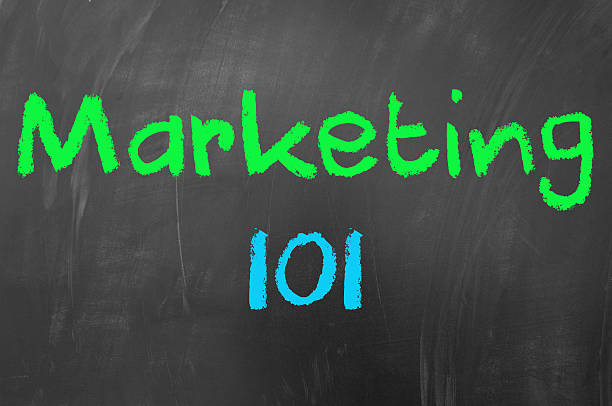Welcome to Marketing 101, where we dive into the essential strategies that will help you boost your brand and stand out in today’s competitive market. In a world saturated with endless choices, it’s crucial to understand how to effectively reach your target audience and leave a lasting impression.
Whether you’re launching a new business or looking to revamp your current marketing approach, this blog post will provide you with all the tools and insights necessary for success. So buckle up and get ready to take your brand to new heights!
Defining Your Target Market
One of the first steps in any successful marketing strategy is understanding your target market. Who are the people you want to reach? What demographics, interests, and behaviors define them? It’s essential to have a clear picture of your ideal customer so that you can tailor your messaging and tactics accordingly.
Start by conducting thorough market research. Look into industry data, analyze existing customers’ profiles, and gather insights from surveys or focus groups. The goal is to identify common characteristics among your target audience and uncover their needs and pain points.
Once you’ve gathered this information, create buyer personas that represent different segments within your target market. These fictional characters will help guide your decision-making throughout the marketing process.
Remember that defining your target market isn’t about excluding potential customers; it’s about maximizing the impact of every marketing dollar spent. By aligning your messaging with what resonates most with your intended audience, you’ll increase engagement and conversions while building stronger brand loyalty.
So take the time to dig deep into who exactly you’re trying to reach. The more specific and accurate you can be in defining your target market, the better equipped you’ll be for success in capturing their attention amidst all the noise out there.
Identifying Your Competitors
When it comes to marketing your brand, understanding who your competitors are is crucial. Identifying your competition allows you to stay ahead of the game and strategize accordingly.
Start by conducting thorough market research to identify other businesses or brands that offer similar products or services as yours. Look beyond just direct competitors – consider indirect competitors as well, those who may not be in the same industry but target a similar audience.
Once you have identified your main competitors, analyze their strengths and weaknesses. What sets them apart? How do they position themselves in the market? By studying their strategies, you can gain valuable insights that will help shape your own marketing approach.
Pay attention to their online presence too. Explore their websites, social media profiles, and any customer reviews available. This will give you an idea of how they engage with customers and what areas they excel in.
Remember that identifying competitors is an ongoing process. As new players enter the market or existing ones evolve, it’s essential to keep tabs on them so that you can adapt and stay competitive.
By staying aware of who your competitors are and what makes them successful (or unsuccessful), you’ll be better equipped to differentiate yourself in the marketplace and carve out a unique space for your brand.
Creating a Unique Selling Proposition
When it comes to marketing your brand, one of the most important aspects is creating a unique selling proposition (USP). A USP is what sets your business apart from competitors and convinces potential customers that they should choose you over others.
To create an effective USP, you need to identify what makes your product or service different. What problem does it solve? How does it benefit consumers? By answering these questions, you can pinpoint the unique features or qualities that make your offering stand out.
Once you’ve determined your USP, it’s essential to communicate it clearly and consistently across all marketing channels. Your messaging needs to resonate with your target audience and highlight why they should choose you. Whether through catchy slogans or compelling storytelling, make sure every piece of content reinforces your USP.
Remember, a strong USP not only attracts new customers but also helps retain existing ones. It creates loyalty by establishing an emotional connection between consumers and your brand. So take the time to refine and articulate what sets you apart – it will be well worth the effort in boosting your brand recognition and driving customer engagement.
Developing a Marketing Plan
A solid marketing plan is the backbone of any successful brand. It serves as a roadmap, guiding your business towards its goals and helping you make informed decisions along the way. But how do you go about developing an effective marketing plan? Here are some key steps to consider.
Start by clearly defining your objectives. What do you want to achieve with your marketing efforts? Whether it’s increasing brand awareness, driving sales, or launching a new product, having specific goals in mind will help shape your strategy.
Next, identify your target audience. Who are they? What are their needs and preferences? Understanding who you’re targeting will allow you to tailor your messaging and tactics accordingly.
Once you know who you’re targeting, research your competition. What strategies are they using? How can you differentiate yourself from them? By understanding what others in your industry are doing, you can find unique ways to stand out and capture the attention of potential customers.
With this information in hand, it’s time to develop compelling messages that resonate with your target market. Your value proposition should clearly communicate why customers should choose your brand over competitors’.
Now that you have clear objectives and a strong value proposition in place, it’s time to select the most appropriate marketing channels for reaching your audience. This could include digital platforms like social media or email marketing or traditional methods such as print advertising or direct mail campaigns.
Set measurable targets for each channel and regularly track and analyze the results. This will allow you to refine and optimize your strategies based on what works best for driving engagement and conversion rates.
Remember that developing a marketing plan is an ongoing process – don’t be afraid to adapt as needed based on changing market trends or consumer behaviors. With careful planning and consistent execution, a well-developed marketing plan can elevate your brand above the competition!
Tracking Your Results
One of the most crucial aspects of marketing is tracking your results. This step allows you to see how effective your strategies are and make any necessary adjustments along the way. By closely monitoring key metrics, you can gain valuable insights into what’s working and what needs improvement.
To start tracking your results, it’s important to establish clear goals. What do you want to achieve with your marketing efforts? Whether it’s increasing website traffic, boosting sales conversions or growing your social media following, having specific objectives will help you measure success.
Once you have set your goals, identify the relevant metrics that align with each objective. For example situstoto, if driving website traffic is a priority, tracking metrics such as page views, unique visitors and bounce rate can provide valuable information about user behavior on your site.
Utilize various analytics tools to track these metrics accurately. Google Analytics is one of the most popular options available – it offers comprehensive data on website performance which enables informed decision-making.
Regularly reviewing and analyzing this data will allow you to identify patterns or trends over time. You may discover certain campaigns that consistently generate high engagement or channels that bring in more qualified leads. Understanding these patterns will enable you to refine your marketing strategy accordingly.
In addition to quantitative data analysis, don’t forget about qualitative feedback from customers. Surveys, reviews and testimonials can offer invaluable insights into customer satisfaction levels and areas for improvement within your brand messaging or product/service offerings.
Remember that tracking results should be an ongoing process rather than a one-time activity. Continuously monitor key performance indicators (KPIs) so that you remain agile in adapting strategies based on changing market conditions or consumer preferences.
By regularly assessing and optimizing your marketing efforts through result tracking, you can ensure maximum effectiveness while staying ahead of the competition – ultimately helping boost brand awareness and achieving long-term success in reaching target audiences!









































